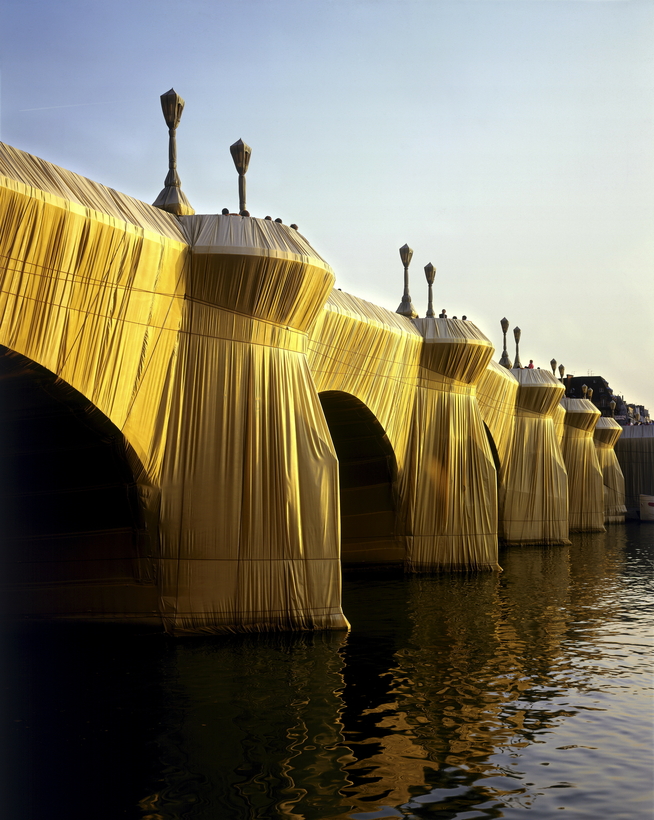In 1961, the married artists Christo and Jeanne-Claude traveled to an anonymous strip of dockside in Cologne to wrap several stacks of oil drums, some more than 15 feet high, with sheets of tarpaulin. It was part of Christo’s nearby gallery exhibition, an extension of his recent obsession with covering cans in fabric in order to explore their sculptural qualities. As the couple stood back to admire their handiwork—a strange act of artistic expression—something clicked.
Over the next few decades they went on to wrap, in endless quantities of brightly colored fabric, the Pont Neuf, in Paris; the Reichstag, in Berlin; a stretch of Australian coastline larger than Mount Rushmore; and 11 islands in Biscayne Bay, Florida. These outdoor structural happenings—for the amount of time they existed—were the most monumental artworks of the last century. Critics have called them “environmental interventions” that provide “a shared experience for every citizen,” though Jeanne-Claude is on record saying, “Our art has absolutely no purpose, except to be a work of art.”

Before any of those dreams materialized, however, Christo returned from Cologne to his small rented room in Paris and spent the next year planning his second project: to wrap the nearby Arc de Triomphe in 270,000 square feet of silvery-blue sheeting and 23,000 feet of red rope. That vision was displaced by others, but this fall, 58 years later, it will be realized. The work on L’Arc de Triomphe, Wrapped starts July 15.
“First, the substructure of cables and steel will be installed,” Christo tells Air Mail, “as well as all of the protection for the sculptures.” The fabric installation begins in early fall, to be completed by opening day, September 19. The lead-up to the Paris project has been slow due to several factors: the death of Jeanne-Claude, in 2009; the French government’s extensive permit-application process; and the need to protect the bird species that nest amid the Arc de Triomphe’s masonry. And then there’s the expense. Ballpark, how much does it cost to wrap a national monument? “Ten to twelve million euros,” Christo replies.

Christo has raised all of the money himself by selling preliminary sketches and scale models. Future projects are funded by selling off the materials after they come down. As with all of Christo and Jeanne-Claude’s projects, materials for the upcoming installation will be industrially recycled. “For instance, the Wrapped Reichstag fabric, which is similar to the L’Arc de Triomphe, Wrapped fabric, was recycled as carpet underlay,” Christo says. “The Floating Piers fabric was used with sand in horse-competition corrals.” Eco-credentials are in check, then.
Ahead of the arch’s unveiling, the nearby Centre Pompidou is staging “Christo et Jeanne-Claude: Paris!,” a show that looks at the work the pair produced between 1958, when they met, in Paris, and 1964, when they left for New York City, as well as their 1975–85 wrapping of the Pont Neuf. Sophie Duplaix, the exhibition’s curator, explains that the show is about the genesis of the couple’s art. “Christo was eager to distance himself from the classical practice through packaging objects,” she says. “His obsession for volume and architecture is clearly visible from his first attempts.” —Harry Seymour
*As a precautionary measure against the coronavirus, the Centre Pompidou is closed until further notice. Please feel free to track its status here

